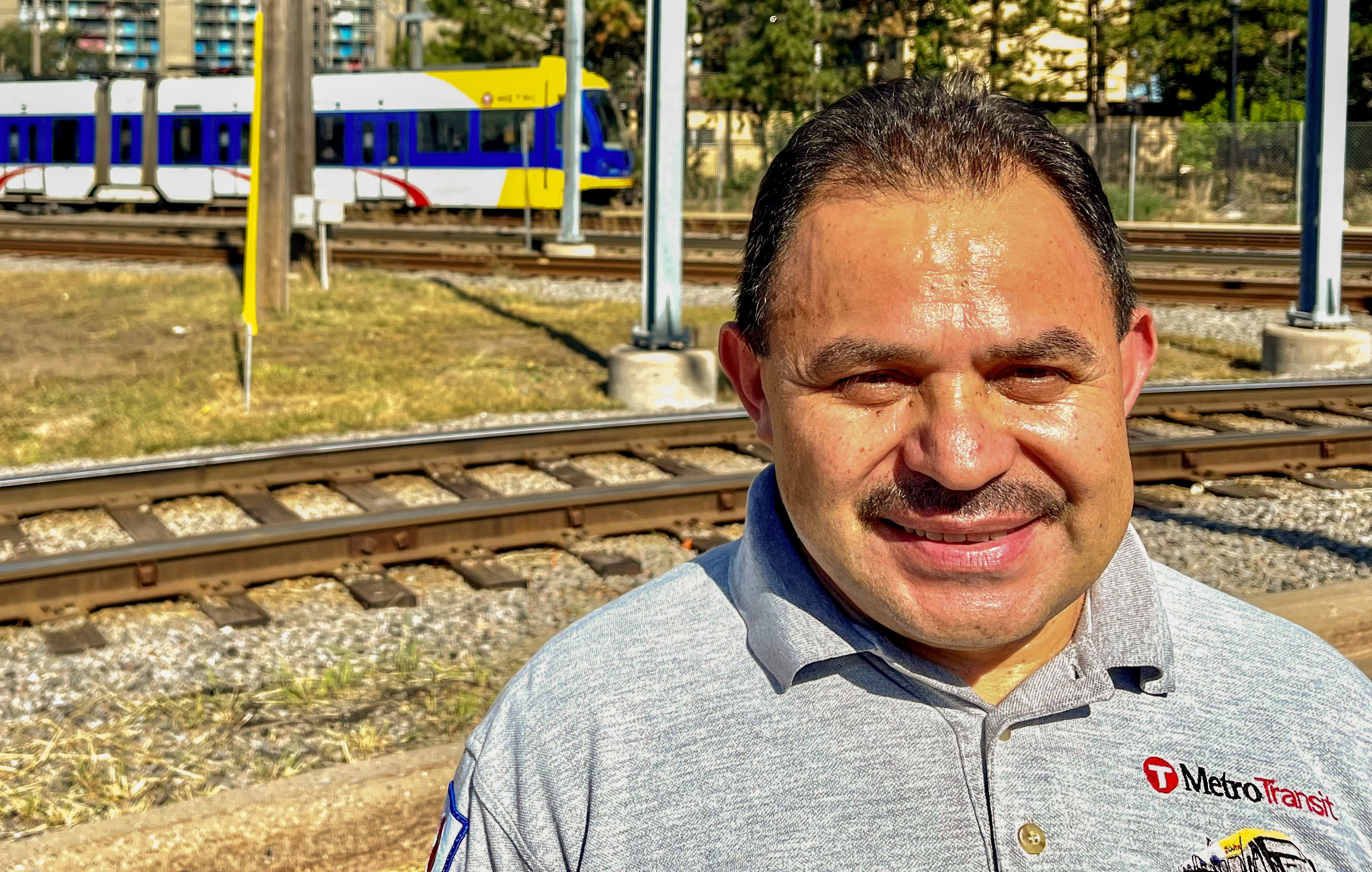
Metro Transit employees come from many cultures and backgrounds. To celebrate this diversity, employees who are proud to share their heritage and identity will be regularly featured on the Riders' Almanac blog. Read more stories here.
Tell us a little bit about your background.
My dad owned a farm in El Salvador. He planted all types of vegetables and owned eight cows and three horses. My mom used to work alongside him, raising pigs and chickens, a little bit of everything. I am the eldest of a family of six and helped bring the rest of my family here.
How did you become interested in moving to the United States?
As a young kid, I suffered during the war in El Salvador. I didn’t want to have a family there under that situation. There were no opportunities to find a job due to it being a poor country. I wanted to succeed but I didn’t have money to go to a university and become somebody. I heard about people moving to the United States, a country of opportunities. So, I decided to leave El Salvador to look for a better future.
How did you arrive in Minnesota?
In 1993, I moved by myself to Los Angeles and worked in gardening and construction before moving in 1995 to Minnesota with friends. After working in a restaurant, I switched to driving school buses. But it was my dream to work for Metro Transit. I just wanted to drive those white buses. I had to apply more than once before I started as a part-time operator, working weekends and holidays while I kept my job driving school buses. Three years later, I decided to go full time. Then, I switched to light rail in June 2006. In 2013, I applied for part-time relief instructor, and I got promoted. Now I am a full-time instructor and have been here 22 years.
How do you experience Salvadoran culture in Minnesota?
The famous dish of El Salvador is pupusas (flatbread made with cornmeal or rice flour and often filled with cheese and other ingredients and served with a spicy fermented cabbage slaw and tomato salsa). All I have to do is ask mom to make them!
What is the biggest difference between El Salvador and the United States?
In El Salvador, there were a lot of small towns where everybody knew everybody and what their jobs were. Christmas is celebrated with food and fireworks like the Fourth of July. Spring break is a huge religious celebration in El Salvador. In July, they have a whole week of festivals like a state fair, and people go to church daily. Every day is in the 70s or 80s but it’s not humid.
¿Cómo llegaste a Minnesota?
En 1993, me mudé a Los Ángeles y trabajé en jardinería y construcción antes de mudarme en 1995 a Minnesota con amigos. Después de trabajar en un restaurante, pasé a conducir autobuses escolares. Pero mi sueño era trabajar para Metro Transit. Tuve que presentar una solicitud más de una vez antes de comenzar a trabajar como operador por medio tiempo, trabajando los fines de semana y los días festivos mientras seguía conduciendo autobuses escolares. Tres años más tarde, decidí dedicarme a tiempo completo. Me cambié al tren ligero en junio de 2006. En 2013, solicité el puesto de instructor de relevo por medio tiempo y me ascendieron. Ahora soy instructor de tiempo completo y llevo aquí 22 años.
¿Cómo vives la cultura salvadoreña en Minnesota?
El plato famoso de El Salvador son las pupusas (pan plano hecho con harina de maíz o arroz y, a menudo, relleno con queso y otros ingredientes y servido con una ensalada de repollo fermentado picante y salsa de tomate). ¡Todo lo que tengo que hacer es pedirle a mamá que los haga!
¿Cuál es la mayor diferencia entre El Salvador y los Estados Unidos?
En El Salvador, había muchos pueblos pequeños donde todos conocían a todos y sabían cuáles eran sus trabajos. La Navidad se celebra con comida y fuegos artificiales como el 4 de julio aquí. Las vacaciones de primavera son una gran celebración religiosa en El Salvador. En julio tienen una semana entera de festivales como una feria estatal y la gente va a la iglesia todos los días. Todos los días están entre los 70 y 80 grados Fahrenheit, pero no hay humedad.